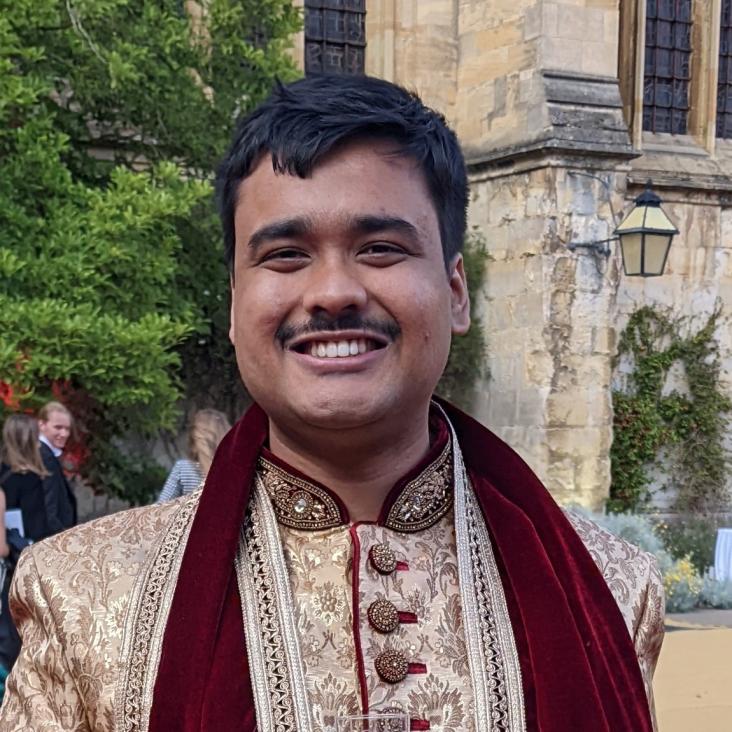Visualizing macroscopic inhomogeneities in perovskite solar cells
University of Oxford (2022)
Abstract:
This contains all data used in the paper: ACS Energy Lett. 2022, 7, 7, 2311–2322, DOI: https://doi.org/10.1021/acsenergylett.2c01094. Data has been sorted into raw and processed, and organised by which figure they appear in. Arrays require Python and the numpy package to load (np.load('filename.npy')). All other data is in text format of some form, easily openable. Some plots require Origin labs to open, but no data in these files are inaccessible from the txt files/ csvs etc.Approaching the radiative limits for wide bandgap perovskite solar cells using fullerene blend electron transport interlayers †
EES Solar Royal Society of Chemistry (2025)
Abstract:
Performance losses in positive–intrinsic–negative architecture perovskite solar cells are dominated by nonradiative recombination at the perovskite/organic electron transport layer interface, which is particularly problematic for wider bandgap perovskites. Large endeavours have been dedicated to the replacement of fullerenes, which are the most commonly used class of electron transport layers, with limited success thus far. In this work, we demonstrate blending the fullerene derivatives [6,6]-phenyl C61 butyric acid methyl ester (PCBM) and indene-C60 bis-adduct (ICBA) as a thin interlayer between 1.77 eV bandgap perovskite and an evaporated C60 layer. By tuning the fullerene blend to a trace 2% by mass of PCBM in ICBA, we remarkably form an interlayer which features improved energetic alignment with the perovskite and the PCBM : ICBA fullerene mixture, together with a stronger molecular ordering and an order of magnitude higher electron mobility than either neat PCBM or ICBA. Additional molecular surface passivation approaches are found to be beneficial in conjunction with this approach, resulting in devices with 19.5% steady state efficiency, a fill factor of 0.85 and an open-circuit voltage of 1.33 V, which is within 10% of the radiative limit of the latter two device parameters for this bandgap. This work highlights the complex nonlinear energetic behaviour with fullerene mixing, and how control of the energetics and crystallinity of these materials is crucial in overcoming the detrimental recombination losses that have historically limited perovskite solar cells.Exposing binding-favourable facets of perovskites for tandem solar cells
Energy & Environmental Science Royal Society of Chemistry 18 (2025) 7680-7694
Abstract:
Improved understanding of heterojunction interfaces has enabled multijunction photovoltaic devices to achieve power conversion efficiencies that exceed the detailed-balance limit for single-junctions. For wide-bandgap perovskites, however, the pronounced energy loss across the heterojunctions of the active and charge transport layers impedes multijunction devices from reaching their full efficiency potential. Here we find that for polycrystalline perovskite films with mixed-halide compositions, the crystal termination—a factor influencing the reactivity and density of surface sites—plays a crucial role in interfacial passivation for wide-bandgap perovskites. We demonstrate that by templating the growth of polycrystalline perovskite films toward a preferred (100) facet, we can reduce the density of deep-level trap states and enhance the binding of modification ligands. This leads to a much-improved heterojunction interface, resulting in open-circuit voltages of 1.38 V for 1.77-eV single-junction perovskite solar cells. In addition, monolithic all-perovskite double-junction solar cells achieve open-circuit voltage values of up to 2.22 V, with maximum power point tracking efficiencies reaching 28.6% and 27.7% at 0.25 and 1.0 cm2 cell areas, respectively, along with improved operational and thermal stability at 85 °C. This work provides universally applicable insights into the crystalline facet-favourable surface modification of perovskite films, advancing their performance in optoelectronic applications.Disentangling degradation pathways of narrow bandgap lead-tin perovskite material and photovoltaic devices
Nature Communications Nature Research 16:1 (2025) 5450
Abstract:
Narrow bandgap lead-tin perovskites are essential components of next-generation all-perovskite multi-junction solar cells. However, their poor stability under operating conditions hinders successful implementation. In this work, we systematically investigate the underlying mechanisms of this instability under combined heat and light stress (ISOS L-2 conditions) by measuring changes in phase, conductivity, recombination and current-voltage characteristics. We find an increased impact of the redistribution of mobile ions during device operation to be the primary driver of performance loss during stressing, with further losses caused by a slower increase in non-radiative recombination and background hole density. Crucially, the dominant degradation mode changes with different hole transport materials, which we attribute to variations in iodine vacancy generation rates. By quantifying the impact of these mechanisms on device performance, we provide critical insights for improving the operational stability of lead-tin perovskite solar cells.Impact of precursor dosing on the surface passivation of AZO/AlOx stacks formed using atomic layer deposition
Energy Advances Royal Society of Chemistry 4 (2025) 553-564


